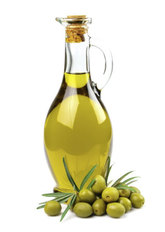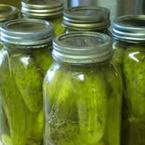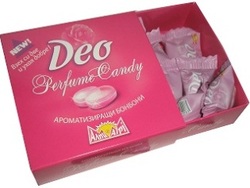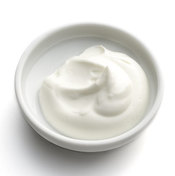
High in monounsaturated fatty acids (MUFAs) considered a healthy dietary fat, as opposed to saturated fats and trans fats.
Olive oil protects against heart disease by keeping 'bad' (LDL) cholesterol levels in check, raising the quantity of good (HDL) cholesterol.It is also easy on the digestion providing beneficial, calming effect on stomach ulcers.
If cooking with olive oil, use low heat, safely lower than its smoke point (207°C or 405°F) after which it loses its flavor and fatty acid composition, potentially making it less healthy.



